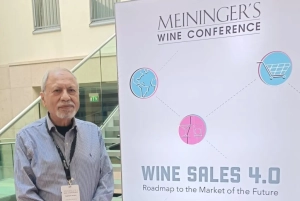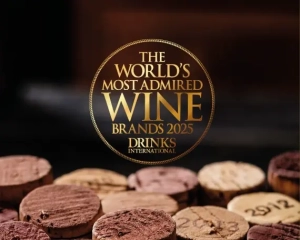From Archives (2007) : MadridFusion 2007 Choked Channel of Distribution in India
From Archives (2007) : MadridFusion 2007 Choked Channel of Distribution in India
During my visit to MadridFusion 2007 last month, I met several Spanish wine producers, some even for the first time. The common refrain was that they all want to export wine to India as they have been hearing a lot about its potential market. The other was if I could help them find a distributor importer.
If I could professionally find one distributor for each of these suitors from Spain or several others who request me everyday, from different corners of the world or meet me at different wine expos, I would make a million! The fact is there are just not enough distributors to go around.
The wine distribution channel in India is badly choked
When one talks of the miniscule market for imported wines in India, currently around 150,000 cases annually, the heavy import taxes as high as 264% ( expected to come down when the government announces its annual budget on the traditional February 28 this year) , is correctly cited as the prime factor for low consumption. Lack of wine awareness and education is obviously a deterrent. Complex policies of federally independent states, is yet a big obstacle.
But people tend to forget that unless we have an open and growing distribution channel, it is practically impossible to introduce new products and expand the market.
Before I embark on the distribution channel issue, I should emphasize that wine is the only beverage where practically each bottle may be unique in flavour and has a personality of its own (cheap plonk excepted). There are infinite possibilities of enjoying different wines of varying quality and the consumer should have a freedom of choice. We have some good Indian wines or even French, Italian or Chilean and other imported wines already in the market, but there are always a host of other wines from several producers, waiting to be explored by the consumer, whose numbers are fast on the increase.
Currently about 60-65 % of the wine imports are in the hands of three importers-Brindco, Sonarys and Global. They are fully choked up with various labels and cannot do justice to new producers. I am on the back foot explaining to scores of these hopeful overseas producers how the top importer Brindco is too busy and unable to respond to their enquiries (though I would find it a good PR exercise for the importer to engage a person send back a reply of regret, at least).
The Italian Wine Guide 2006 compiled by Indian Wine Academy and released by the Italian Trade Commission in November 2006 lists importers of Italian wines-seventeen in all! There are no more than 30 active importers who matter. The total number is less than 50, though about 85% of the wine imported is by fewer than 10 importers. No wonder the arteries of the system are severely clogged!
Wine import is a recent phenomenon since the government liberalized imports five years ago, though the erstwhile Sansula started importing wines in the early nineties and quite a few importers brought in small quantities of cheap wines for hotels and diplomatic channels and supplied them to then market through bootleggers (for the uninitiated, this generally means selling table wine as a commodity, by short circuiting the exchequer).
Most importers/ distributors of spirits and liquor had made their fortunes in this trade and decided to add wine import as an adventure sport. I term these importers as ‘old world’ importers. They had bonded warehouses and knew their way around the government labyrinth. It is no surprise then that all three of the top importers belonged to this category. So did the next. and the next. and the next.
Mohan Exports, SV Distributors (Mumbai), Dhall Foods, Sultania, Radico Khaitan are all ‘old world’ importers. Even the new generation, Hema Connoisseurs started with imports of spirits.
About four years ago, the winds started to change slightly. We saw ‘new world’ importers like Sovereign Impex, Kiara, Brandwagon etc started rolling in. This category focused on wine imports mostly. Of course Moet Hennessy has been an established ‘own world’ importer dealing with imports, not only from Champagne but also boasts a portfolio of Australian, Chilean and US wines, primarily from their own basket of wineries. Similarly, Seagram’s pumped in its non-spirited Jacobs Creek from Australia , encashing on the international branding (Tesco super-star, official drink at Wimbledon etc!) and even became the fourth largest importer. Indian wine producers Sula and Champagne Indage started importing really as a hedge.
We need more importers/distributors to expand the market. Period!
The reason forwarded by the existing importers is that there is just not enough market. The hotels cannot expand their wine lists beyond a certain point. Naturally! Wines are priced so high that it is very difficult to order a bottle of wine every time one goes out. Diva, the well-known Italian restaurant in Delhi that has become synonymous with wine has about 460 labels. The owner chef Ritu Dalmia keeps on expanding the list and adding to her sales, smiling all the way to the bank. And she pays import duty on most of her wines unlike most hotels.
With the new policies of allowing sales through the retail and supermarkets, this segment is about to grow exponentially, what with Wal-Mart, Tesco, and our own desi Food Bazaar and Reliance etc ready to spread their wings. Currently, wine retail accounts for less than 10% of total sales. Most countries peg this figure at 50%. In India , this figure can easily reach 60% if the hotels continue to extort, thus offering a huge sales potential in this sector. A recent study by Technopak estimates that the number of super-rich households with an income of over Rs. 40 lakhs (US $ 90,000) will be about 1.8 million by the end of 2007 and the number of consumers in such households will exceed 6 million. If 10% of this population can be tapped for drinking one case of wine a year (regular wine drinkers in this category already consume more than 10), this implies a potential sale of 600,000 cases, an increase of more than 400%- from this segment alone. And premium wines (Retail Price Rs.1200-3000) will find a ready market with this set provided there are distributors willing to tap this segment.
Fortunately, there is a change in the offing. Many new and serious players are entering the fray- UB group being just one of them. Smaller players with bigger dreams, like A Votre Sante, Amfora Wines, Chateau d’Ory, Pearl wines are a few of many new entrants. Maureen Kerleau a French exporter has been focusing on India with blinkers on. After participating twice in IFE – India , a premier food and wine show held in Delhi every December, she has firmed up her distribution set up and is ready to charge. Marlies Grumbach of Wineland, Germany brought Gunderloch and Dr. Loosen wines at the same show and was able to sign up Brindco after proper follow ups.
Wine shows like IFE India or Vinitaly India are a perfect hunting ground for locating new distributors. There are many passionate entrepreneurs who are hungry for new business and are looking for good products. Such shows provide a common meeting ground, apart from providing the F & B personnel an opportunity to expose to the unexplored world of wines, without moving out of the city. A word of caution to the wine producers though- watch out for the fly-by-night operators. Consultants like Indian Wine Academy should be engaged to check out such rogue importers before shipping the container-full of wines and celebrating hitting the jackpot.
The wine market will continue to expand even within the current scenario. If you are a producer, remember patience and perseverance is the mantra for this difficult market. If you are an Indian entrepreneur with passion for wine and penchant for selling, importing wines could be yours to reach that pot of gold. Even if you fail to become the top importer, the journey through the world of wine would be a reward in itself. And you would have helped de-clog the choked wine distribution channel!
Cheers,
Subhash Arora




